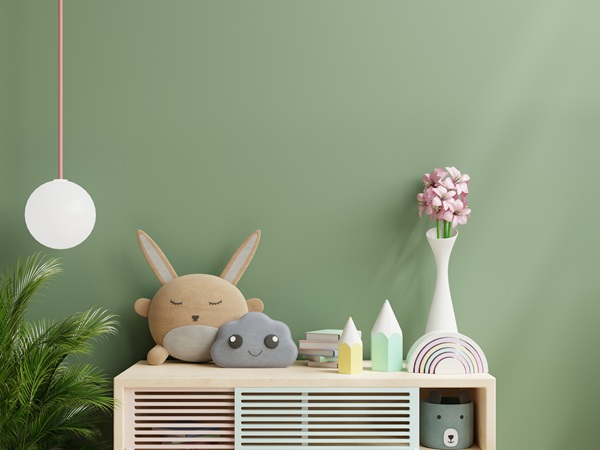Painting kids rooms and researching what colours? Selecting the right paint colour for a child’s bedroom goes beyond aesthetic appeal; it’s about harnessing the power of colour to affect a child’s mood and behaviour positively. Studies show that certain colours can influence feelings and attitudes, making the choice of paint colour for walls in children’s rooms a pivotal decision in design. While some colours encourage relaxation and calmness, others can foster an environment of excitement and creativity, underscoring the significance of a carefully chosen colour chart in designing kid-friendly spaces.
This blog delves into the psychology behind room paint colour and its impact on child psychology, guiding parents and designers in making informed choices. From the calming hues best suited for sleep and relaxation to vibrant colour palettes stimulating play and learning, we’ll explore the most popular paint colours for kids’ rooms. Additionally, we will provide insights into selecting the perfect paint colours for bedrooms, ensuring environments that look appealing and support a child’s emotional and psychological well-being.
The Impact of Colour on Child Psychology
Understanding the profound impact of paint colour on child psychology is pivotal in creating an environment that fosters well-being and development. Here’s how different colours influence a child’s mood, behaviour, and learning capabilities.
Calming Colours for Well-being
Light Blues: Known for their soothing effect, they can slow down heart rates and reduce blood pressure, promoting a sense of calm.
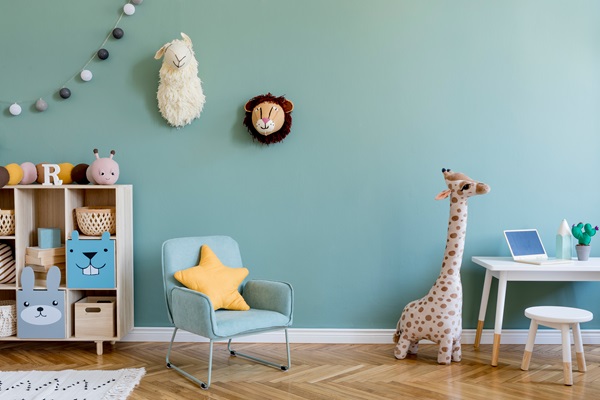
Soft Greens: Encourage concentration and have a positive impact on health, making them ideal for learning spaces.
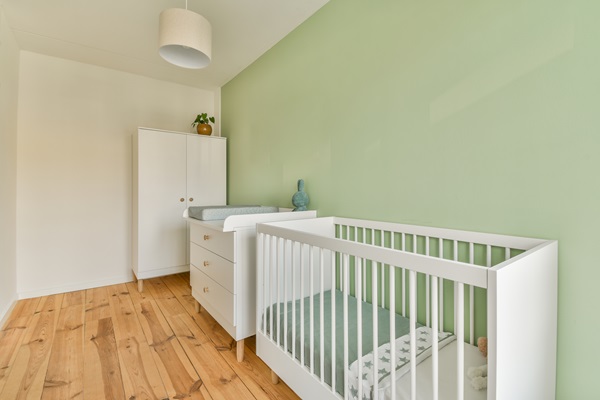
Faded Lavenders: These hues are excellent for relaxation, helping to ease the transition into sleep.
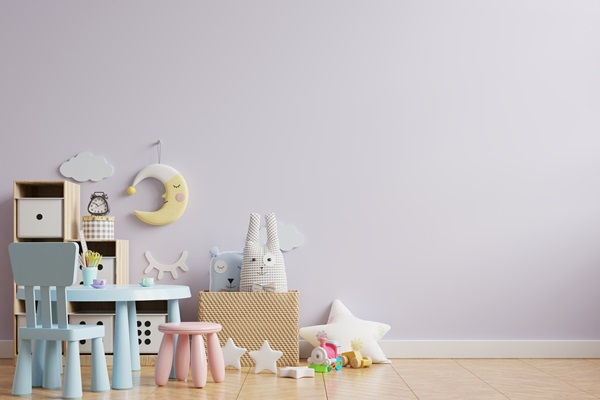
Stimulating Colours for Creativity and Energy
Light Pink: Offers warmth and comfort, reducing stress and fostering tranquillity.
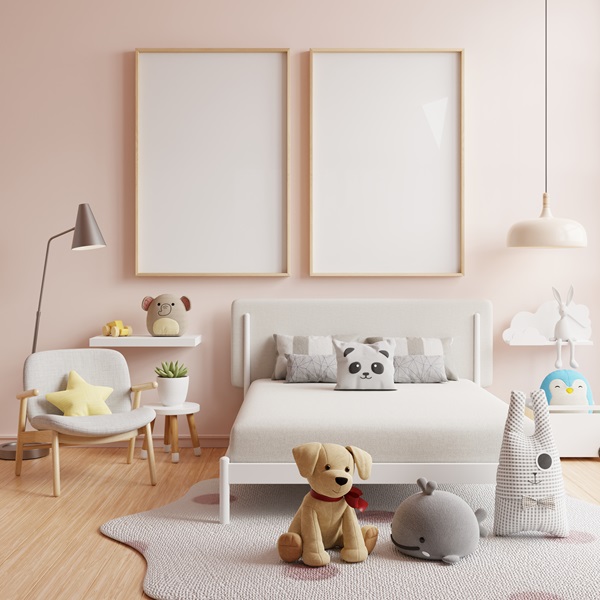
Yellow: A neutral colour that brings happiness and peacefulness, ideal for sparking creativity.
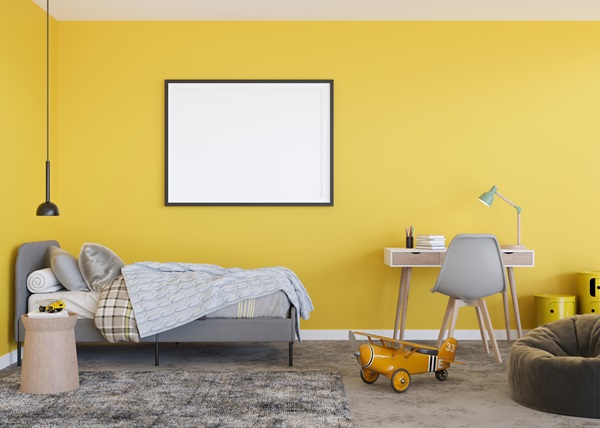
Orange (with brown undertones): A lighter shade that can invoke feelings of serenity, perfect for creative corners.
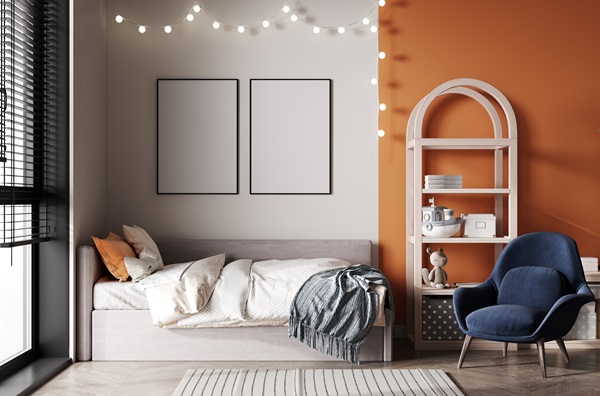
Colours to Use Sparingly
Intense Reds and Deep Purples: These bold colours might be too stimulating, potentially increasing restlessness or aggression.
Bright Whites: While they can stimulate creativity, too much white may feel stark, requiring balancing with warmer tones.
Incorporating the right balance of colours can significantly enhance a child’s room, making it a conducive space for sleep, relaxation, and learning. Opting for muted tones over bold ones can positively impact mood and cognitive functions, creating an environment that supports a child’s emotional and psychological growth.
What Colour Should I Paint a Child’s Bedroom
Deciding on the perfect paint colour for a child’s bedroom requires a thoughtful approach, considering both aesthetic appeal and the psychological effects colours have on children.
Here are 3 key considerations.
- Age Appropriateness
Younger children might thrive in rooms painted with softer, calming colours like light blues and greens, which can help in creating a soothing environment conducive to sleep. As children grow, incorporating their favourite colours or more vibrant hues can reflect their developing personality and interests.
- Functionality
Consider the primary use of the room. For study-focused spaces, soft greens and blues can enhance concentration and calmness. For play areas, brighter colours like yellow or light orange can stimulate creativity and energy.
- Lighting
The natural and artificial lighting in the room will affect how paint colours appear. Lighter colours can help make small or poorly lit rooms feel larger and brighter, while darker colours can add cosiness to well-lit, spacious rooms.
Choosing the right paint colour involves balancing these factors to create a space that not only looks beautiful but also supports the child’s emotional and psychological well-being.
Calming Colours for Sleep and Relaxation
In the realm of creating a serene and restful environment for children, selecting the right paint colour for walls plays a crucial role. Here’s a detailed look at calming colours that are perfect for promoting sleep and relaxation in kids’ rooms:
Soft Pastels and Muted Tones
Baby Blue: A gentle hue that mirrors the sky, instilling a sense of tranquillity and vastness.
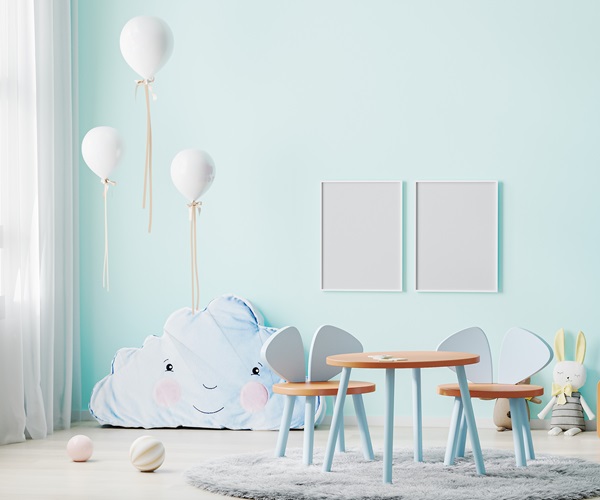
Mint Green: Offers a refreshing and soothing backdrop, reminiscent of nature’s calming presence.
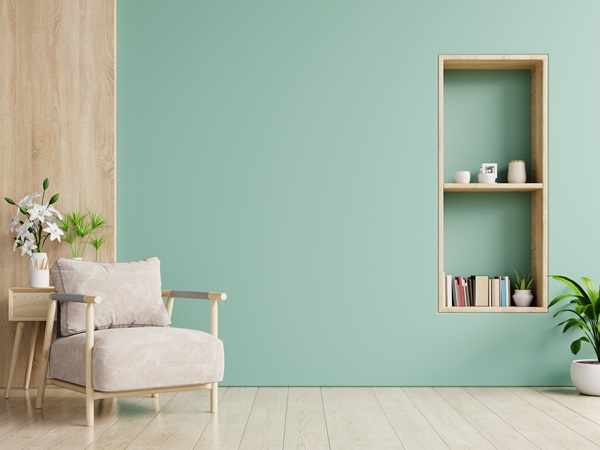
Pale Yellow: A subtle whisper of sunshine that brings warmth and light without the intensity of its brighter counterpart.
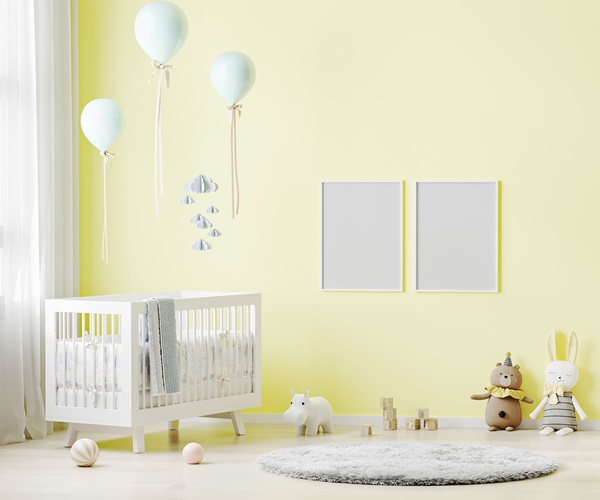
Neutral Shades for a Calming Base
Ivory: Provides a soft, warm canvas that pairs well with other colours, creating a comforting and cosy feel.
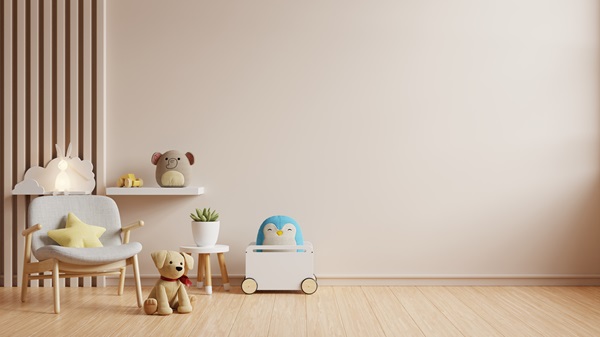
Light Grey: A versatile choice that conveys stability and calm, serving as a neutral backdrop for vibrant accents.
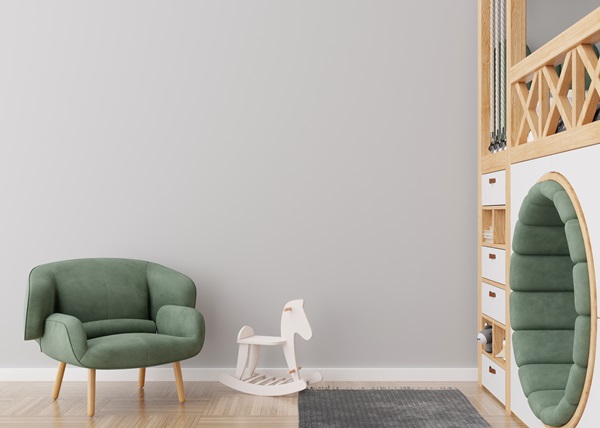
Accent Colours to Enhance Tranquility
Lavender Accents: Touches of lavender in accessories or a feature wall can introduce a relaxing vibe without overwhelming the space.
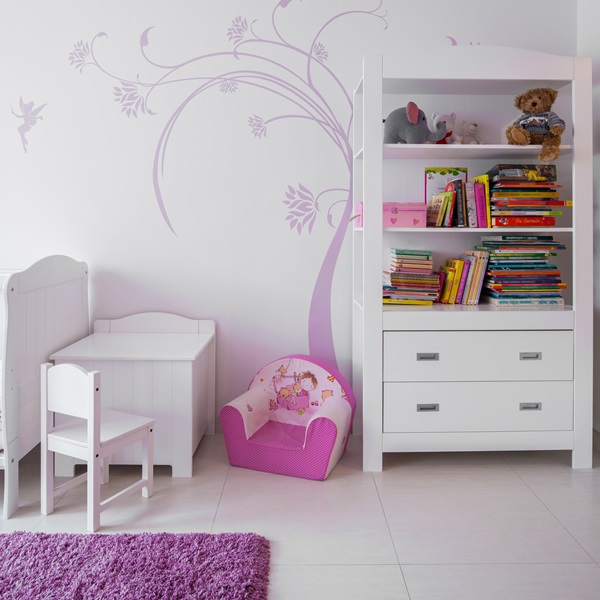
Soft Peach: Adds a nurturing and soft touch that can complement the main colour palette, fostering a restful environment.

Incorporating these paint colours in a child’s bedroom can significantly contribute to a peaceful atmosphere conducive to sleep and relaxation. By choosing colours that evoke calmness and serenity, parents can create a space that not only looks appealing but also supports their child’s well-being.
How Do Room Colors Influence Children’s Behavior?
Blue is particularly beneficial for children with behavioural issues as it has a calming effect, helping to reduce anxiety and anger. When combined with the confidence-boosting qualities of orange or the cheerful vibes of yellow, it creates a balanced and harmonious atmosphere in a room.
Why Is Choosing the Right Color for a Child’s Room Important?
Colours have the power to inspire, excite, soothe, heal, and even agitate, especially in children who are more sensitive to their effects. Therefore, selecting the appropriate colour for a child’s room is crucial due to its significant impact on their emotional and psychological well-being.
How Does the Psychology of Paint Colours Affect Mood?
The psychology behind paint colours suggests that bright, warm colours like reds, oranges, and yellows can energise and uplift mood, making them ideal for social areas like dining rooms or kitchens. On the other hand, cool, subdued colours such as blues, greens, and purples have a calming and soothing effect, perfect for creating a relaxing environment in bedrooms or bathrooms.
Popular Paint Colours for Kids Rooms
In the world of children’s rooms, the choice of paint colour plays a fundamental role in setting the right atmosphere for growth, creativity, and rest. Among the popular choices, Navy, Powder Blue, and Forest Green offer a sense of stability and calm, ideal for both play and study areas. Bright White and Beige serve as neutral backdrops, enabling colourful accessories and artwork to stand out, while Lavender and Pastel Pink inject a gentle, soothing vibe into the space.
For those seeking a more dynamic environment, Vivid Green, Blue-Gray, and Deep Teal introduce a lively yet balanced ambience. Bright Pink and Peach add a playful touch, perfect for stimulating imagination. The versatility of Off-White and Light Yellow makes them excellent choices for smaller rooms, creating an illusion of space and light.
Conclusion
Throughout this exploration of the psychology behind room paint colours, we’ve uncovered the impact these choices can have on a child’s emotional and psychological development. From the calming influence of light blues and soft greens to the stimulating effect of vibrant yellows and oranges, the importance of selecting the right colour palette for a child’s room cannot be overstated. These decisions play a crucial role in creating environments that support sleep, learning, and play, reflecting the nuanced needs of a child’s developing psyche.
As parents and designers navigate the journey of designing kid-friendly spaces, the insights gathered here offer a valuable guide for creating nurturing environments that cater to the well-being and growth of children. By carefully considering the psychological implications of paint colours and balancing aesthetic appeal with functional needs, one can craft spaces that not only look appealing but also foster a positive impact on a child’s mood, behaviour, and overall development. This thoughtful approach to design champions the potential of well-chosen colour palettes to transform ordinary rooms into havens of comfort, creativity, and tranquillity for the young occupants.

